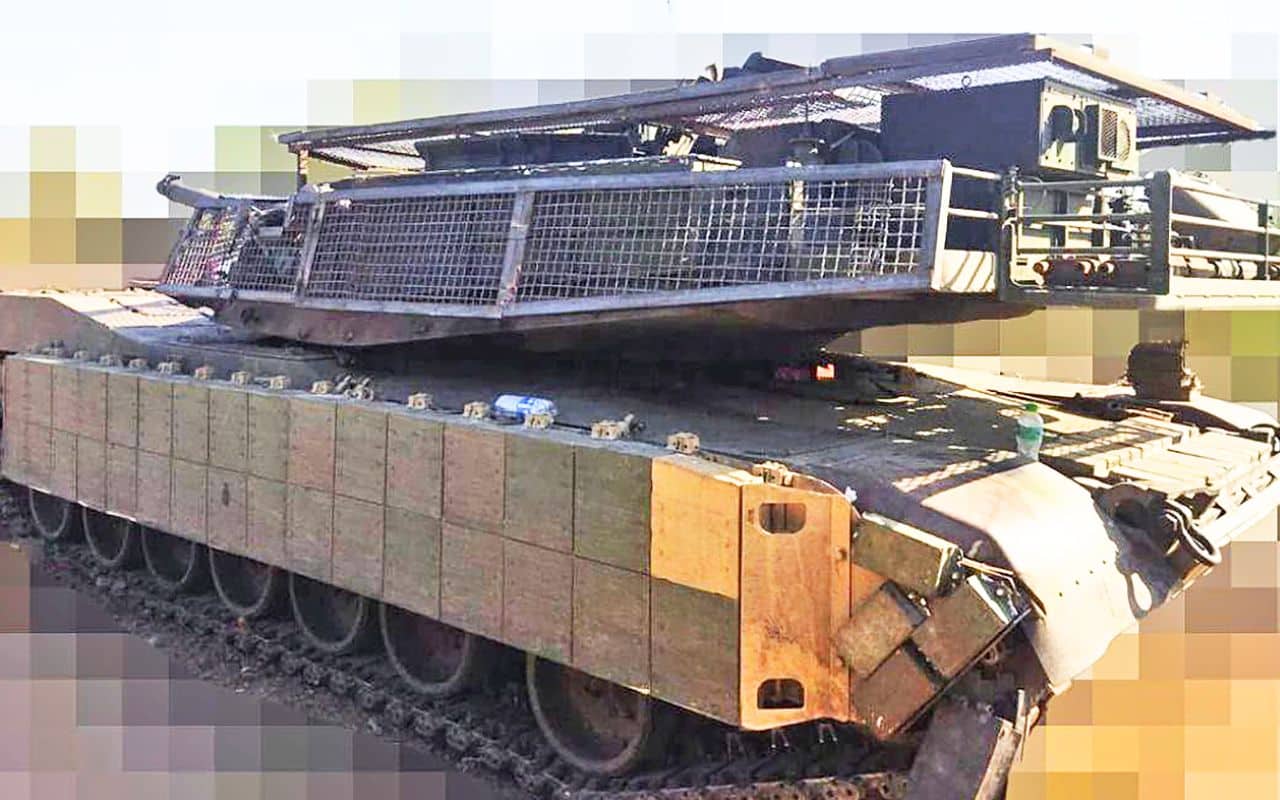The United States Army is actively addressing new challenges on the battlefield with a bold initiative to modernize its armored vehicle fleet. By 2027, around 1,500 U.S. military vehicles are set to be equipped with specialized anti-drone defense systems, marking a significant evolution in combat tactics.
This move is a direct outcome of insights gained from recent wars where drones have fundamentally altered the nature of warfare.
Groundbreaking Anti-Drone Defenses Enhancing U.S. Military Strength
The Pentagon has earmarked close to $100 million (€92 million) to outfit 1,280 armored vehicles with cutting-edge Top Attack Protection (TAP) systems by the end of 2027. This considerable funding addresses a crucial vulnerability that has become increasingly clear in today’s combat environments.
The rapid growth and accessibility of drone technology have transformed battlefield conditions, introducing new dangers for traditional armored units.
These defense mechanisms take inspiration from the improvised “cope cages” first spotted on Russian tanks in 2021 but have since evolved into highly advanced protective solutions.
TAP systems consist of engineered metal frameworks installed above vehicle turrets, designed to intercept, divert, or detonate incoming aerial munitions before they hit the vehicle’s more exposed upper surfaces. U.S. military strategists have prioritized this technology after reviewing combat data from various conflict zones, where armored vehicles were severely impacted by aerial drone strikes.
The Department of Defense collaborates with multiple tech partners to push military innovation forward, much like NASA and the DoD rely on SpaceX for space technology. This cooperative strategy ensures that U.S. forces sustain their technological edge across diverse operational arenas.
The rollout of these systems will take place in stages, with each vehicle receiving tailored setups according to their unique operational needs. The comprehensive protection plan includes:
- Paint that reduces thermal signatures to lower detectability
- Sophisticated laser warning receivers that notify crews if targeted
- Reactive armor modules adapted to specific platforms
- Custom-designed TAP structures fitted to each vehicle model
Combat Experience in Ukraine Driving Future Armored Warfare Strategy
The urgency behind this protective upgrade directly arises from combat lessons learned in Ukraine, where armored vehicles on both sides have sustained heavy losses due to inexpensive drone attacks.
Of the 31 M1 Abrams tanks initially delivered to Ukrainian forces, 22 were reportedly destroyed or damaged, primarily by FPV (First Person View) drones carrying explosives that struck from above.
After these incidents, the surviving tanks were temporarily pulled back and subsequently reintroduced with added protective measures. This frontline combat experience has profoundly shifted U.S. military perceptions of armored vehicle vulnerabilities, fueling this extensive modernization drive. The threat posed by attacks from overhead represents a major tactical challenge that conventional armor designs were never intended to withstand.
Failures in military technology can have serious consequences, illustrated by instances such as the SpaceX Starship 36 test explosion, although without injuries. Likewise, unshielded armored vehicles face potentially devastating outcomes when exposed to modern drone warfare.
The implementation timeline for these protective systems is carefully planned as follows:
| Development Stage | Planned Timeline |
|---|---|
| Contract Initiation | April 2026 |
| Prototype Testing | Summer 2026 |
| Start of Production | Spring 2027 |
| First Deliveries | November 2027 |
| Full Fleet Deployment | 2028-2029 |
Comprehensive Vehicle Defense Extending Beyond Basic Drone Shields
The U.S. initiative against drones goes further than simple metal cages. The Vehicle Protection System (VPS) program integrates multiple layers of defensive technologies to offer robust protection for armored units.
This multifaceted approach acknowledges the diverse nature of modern battlefield threats, which come from various directions and demand complex countermeasures.
Different vehicle types—including M1 Abrams tanks, Bradley Fighting Vehicles, and Stryker combat vehicles—will be outfitted with customized protection solutions designed to fit their operational roles.
Considerations such as vehicle weight limits, hatch access, and deployment scenarios require distinct design adaptations within the fleet. The TAP system comprises just one element of a broader defense plan.
While the U.S. advances its armored vehicle protection, other countries are also making significant technical progress. For example, China’s Tianwen-2 mission is set to return asteroid samples to Earth, highlighting how technological competition extends beyond the military into space exploration.
The enhanced protection strategy includes:
- Physical barrier structures to intercept potential threats
- Technologies to reduce vehicle detectability
- Early warning systems to notify crews about attacks
- Active countermeasure systems on selected platforms
- Tactical adjustments to reduce exposure and risk
Changing the Philosophy of Combat Vehicle Design
The anti-drone shield program marks a fundamental change in how armored vehicles are designed. Future models, such as the developmental M1E3 Abrams variant, will incorporate top-attack defenses as standard features rather than afterthoughts or field modifications.
This evolutionary approach reflects the lasting transformation in battlefield dynamics brought on by widespread drone usage.
Military leaders have openly acknowledged that no current tank design without supplementary systems can fully withstand aerial threats. This transparent admission has driven the comprehensive adoption of TAP systems across all combat vehicles.
The vulnerability of even the most advanced armored platforms to relatively inexpensive drone weapons has forced a radical re-evaluation of protection priorities.
The dimension of aerial threats has effectively ended the era where ground vehicles relied chiefly on frontal armor for protection.
Future combat designs must adapt to a three-dimensional battlefield environment where attacks may originate from any direction, particularly above, which was formerly considered a secondary concern.
As drone technology rapidly advances, these protective efforts represent only the initial stage in a continuous adaptation process.
The competition between offensive drone capabilities and defensive responses is expected to intensify, requiring ongoing innovation to ensure ground forces remain effectively shielded in future conflicts.
